What is multispectral imaging?
Multispectral imaging is a method for photographing cultural heritage objects, manuscripts or paintings, that have been damaged or written/painted over. By taking a sequence of photographs under various wavelengths of light, both in the visible part of the spectrum and the invisible (ultra violet and infrared), details that are normally invisible to the naked eye can often become visible. MSI works especially well for manuscripts that have been damaged by water or blackened by fire, faded over time, or scratched out and overwritten, what is known as a palimpsest.
 Archimedes palimpsest, before and after MSI
Archimedes palimpsest, before and after MSI
The Archimedes palimpsest
One of the most famous manuscripts recovered by multispectral imaging is the Archimedes Palimpsest. In 1229, scribes in Jerusalem decided to reuse some parchment they had left over from an old manuscript no one was using. They scraped the ink off the old text, turned it 90 degrees, and then copied the text of a Greek prayerbook onto it. What they didn’t realize was that the old text included several treatises by the great Greek mathematician Archimedes, three of which – the Stomachion, The Method of Mechanical Theorems, and On Floating Bodies– existed in no other copies. These three works demonstrated that Archimedes had used an early form of calculus 2000 years before Newton discovered it. The reason we have these texts today is that a team of imaging scientists led by Roger Easton, a professor of Imaging Science at the Rochester Institute of Technology, used multispectral imaging (and to a lesser extent x-ray fluorescence) to enhance the erased undertext.
Early MSI
Although digital imaging and image processing is only about 25 years old, analog multispectral imaging is over a century old. In 1913, Gustav Kögel, a Benedictine monk from the monastery of Beuron in Germany, filed a patent: “Verfahren zum Beleuchten von fotografisch aufzunehmenden Palimpsesten” (Method for illuminating palimpsests for photographic capture).
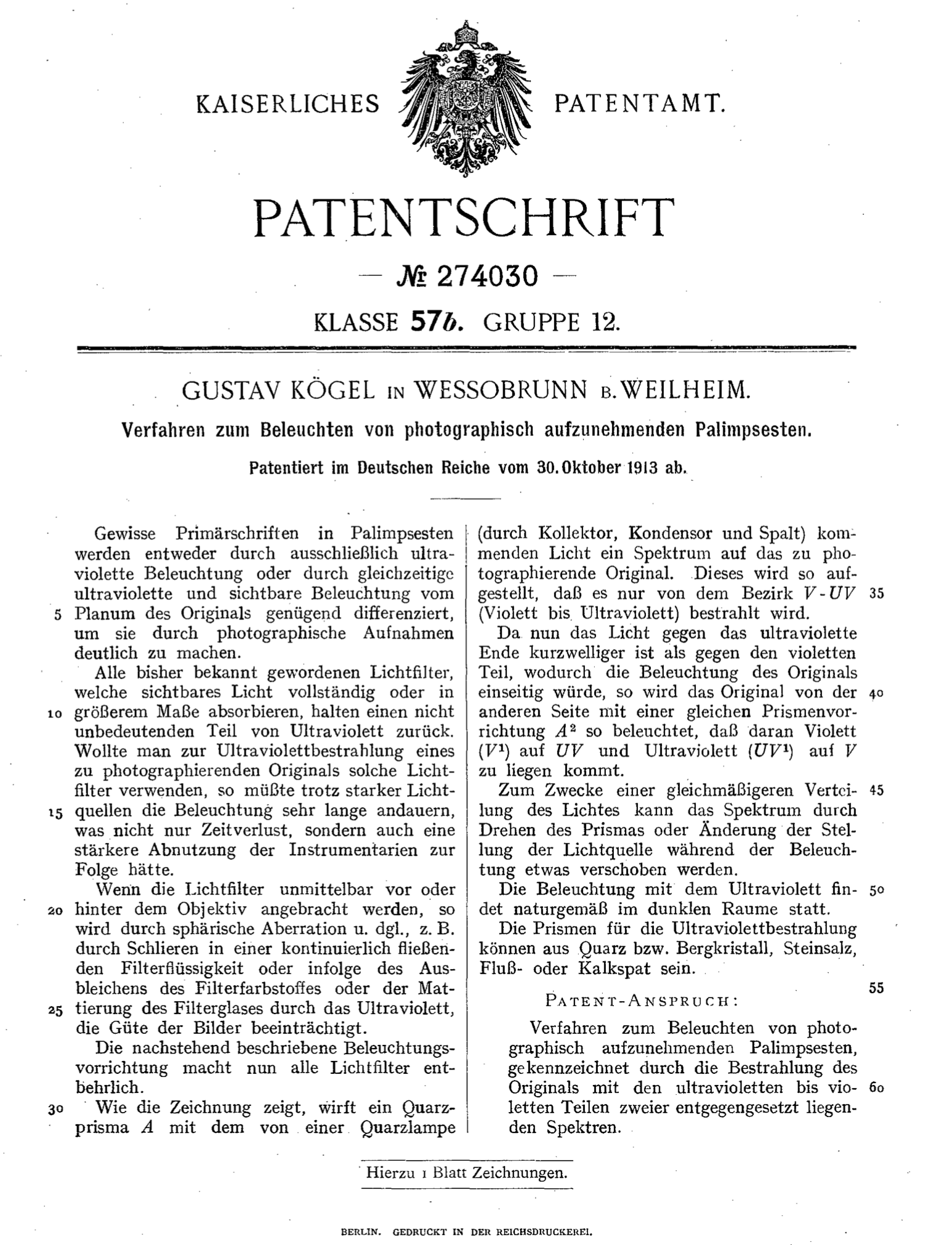 Kögel’s multispectral patent, 1913
The first paragraph reads:
Kögel’s multispectral patent, 1913
The first paragraph reads:
By using either ultraviolet light alone or with visible light in conjunction with photography, certain undertexts in palimpsests will be differentiated sufficiently from the overtexts to make them clearly visible
The patent goes on to describe a method for using prisms to separate ultraviolet light from white light, projecting it onto the surface of the manuscript leaf. What Kögel realized, perhaps without understanding exactly the physics behind it, was that fluorescence is a key to the success of multispectral photography.
Fluorescence
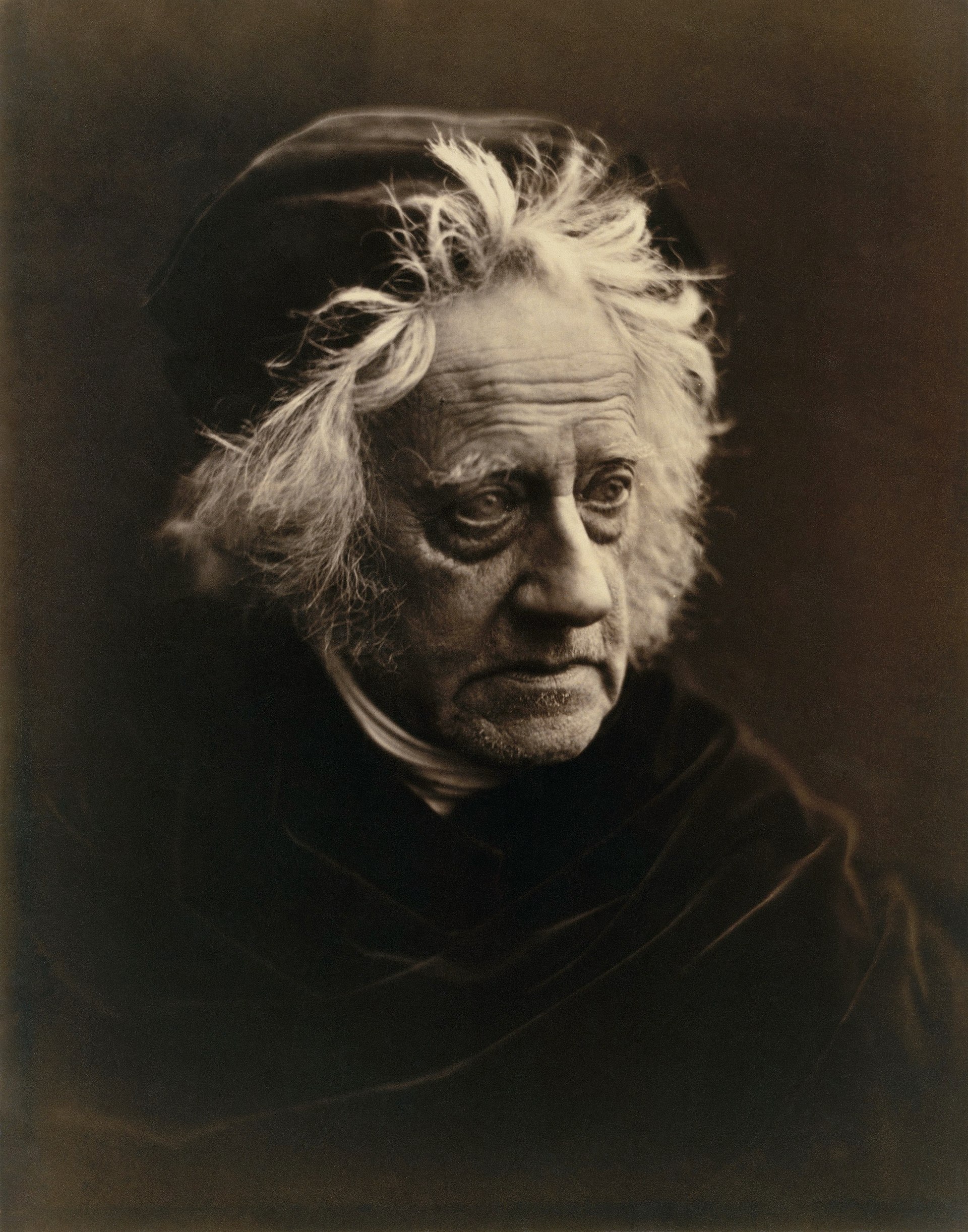
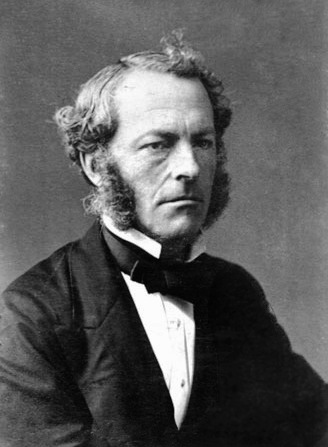
John Herschel and George Stokes
In 1845, Sir John Herschel published the first account of what later came to be known as fluorescence. Examining a solution of quinine in water, he noticed the following:
Though perfectly transparent and colourless when held between the eye and the light, or a white object, it yet exhibits in certain aspects, and under certain incidences of light, an extremely vivid and beautiful celestial blue color.
Herschel, On a case of superficial colour
You can do the same experiment at home. Shine a black light on a bottle of tonic water, which gets its bitter flavor from quinine, and it turns “celestial blue.”
 Tonic under black light
Tonic under black light
Ultraviolet light, as in the example above, can cause fluorescence in a variety of materials including cloth, paper, and parchment. Of course, lacking the modern model of the atom developed by Rutherford and Bohr in 1913, Herschel didn’t know precisely how fluorescence worked. Basically, ultraviolet light is a short, energetic wavelength that bombards an object – let’s say a piece of parchment – with photons. Those photons hit the electrons in the outer shell of atoms in the parchment, knocking them down one shell. The atom then re-emits energy in the form of light. Or in other words, the parchment starts to glow.
Two things about fluorescence in manuscripts are crucial to understanding why multispectral imaging works. First, the two main types of ancient ink, iron gall and carbon ink, both absorb UV and do not fluoresce. Instead, the parchment or paper around the ink glow brightly. Even when the ink is degraded, erased, or mostly washed away, whatever remains appears suddenly much darker in contrast to the bright parchment around it, making the text more legible. Second, fluorescence obeys the rule of the Stokes Shift.
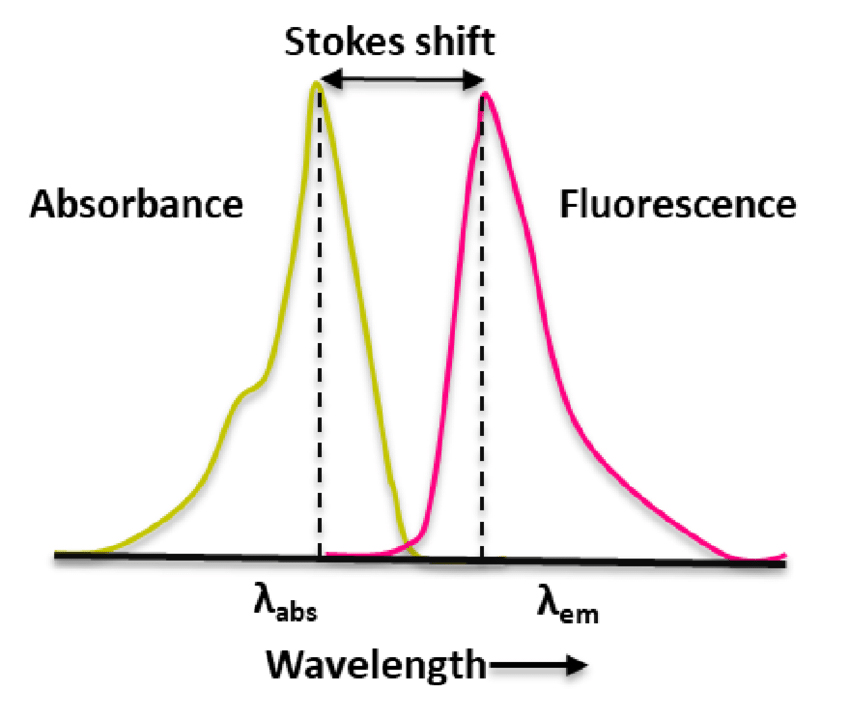 Stokes Shift
Following Herschel’s discovery, George Stokes recognized that the wavelength of fluorescence that a material emits is longer than the wavelength of the light that excites fluorescence. Simply put, the object glows a different color from the light that illuminates it. When parchment is illuminated with UV (365nm), it looks yellowish green (~550nm). That means that the Stokes shift for parchment is roughly 185nm.
Stokes Shift
Following Herschel’s discovery, George Stokes recognized that the wavelength of fluorescence that a material emits is longer than the wavelength of the light that excites fluorescence. Simply put, the object glows a different color from the light that illuminates it. When parchment is illuminated with UV (365nm), it looks yellowish green (~550nm). That means that the Stokes shift for parchment is roughly 185nm.
Band pass filters in MSI
So why is the Stokes shift important for MSI? Remember when I said that the crucial thing about fluorescence is that ink doesn’t and the parchment does, and therefore that in fluorescence faded text on a manuscript is the darkest it can be? That means that the pure fluorescence emitted by the manuscript carries the clearest images. Unfortunately, the camera sees a mixture of emitted fluorescence and reflected UV or blue light which provokes the fluorescence (Figure 1.A. below). In other words, the reflected UV and blue muddy the clarity of the data.

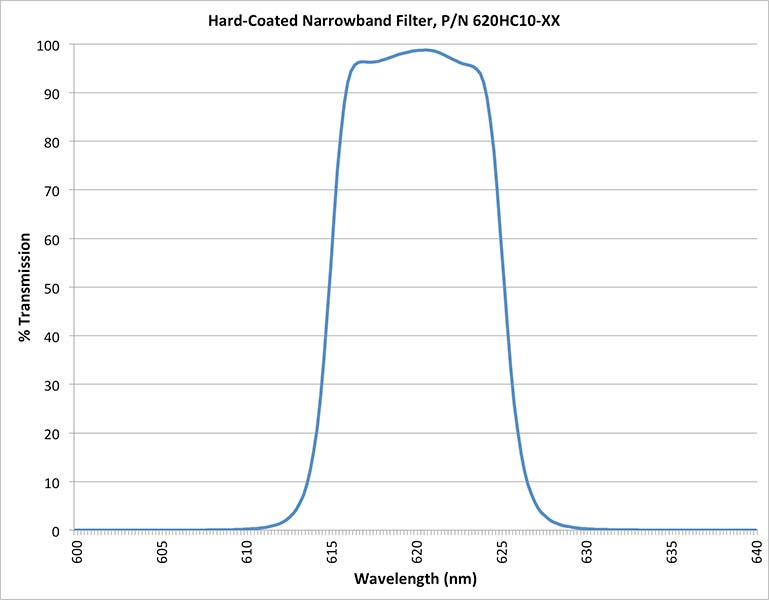
However, it is possible to block out the relected UV and blue and let through only pure fluorescence using band pass filters. These are colored gel films that allow only a certain, narrow range of wavelengths through to the sensor (Figure 1.B). The best MSI systems have a filter wheel with a variety of band pass filters that let various longer wavelengths of fluorescence in while blocking out the shorter UV and blue (Figure 1.A).
Infrared light
So far, I have talked mostly about one invisible wavelength: the shorter wave ultraviolet. Also important, however, is longer wave infrared light, which is also invisible to the human eye. Infrared, the light used in night vision goggles, affects manuscripts in two, very particular ways. First, because the wavelength is longer than UV or visible light, it can penetrate more deeply into the manuscript. That means it can see through dirt, discolorations, stains, charring.
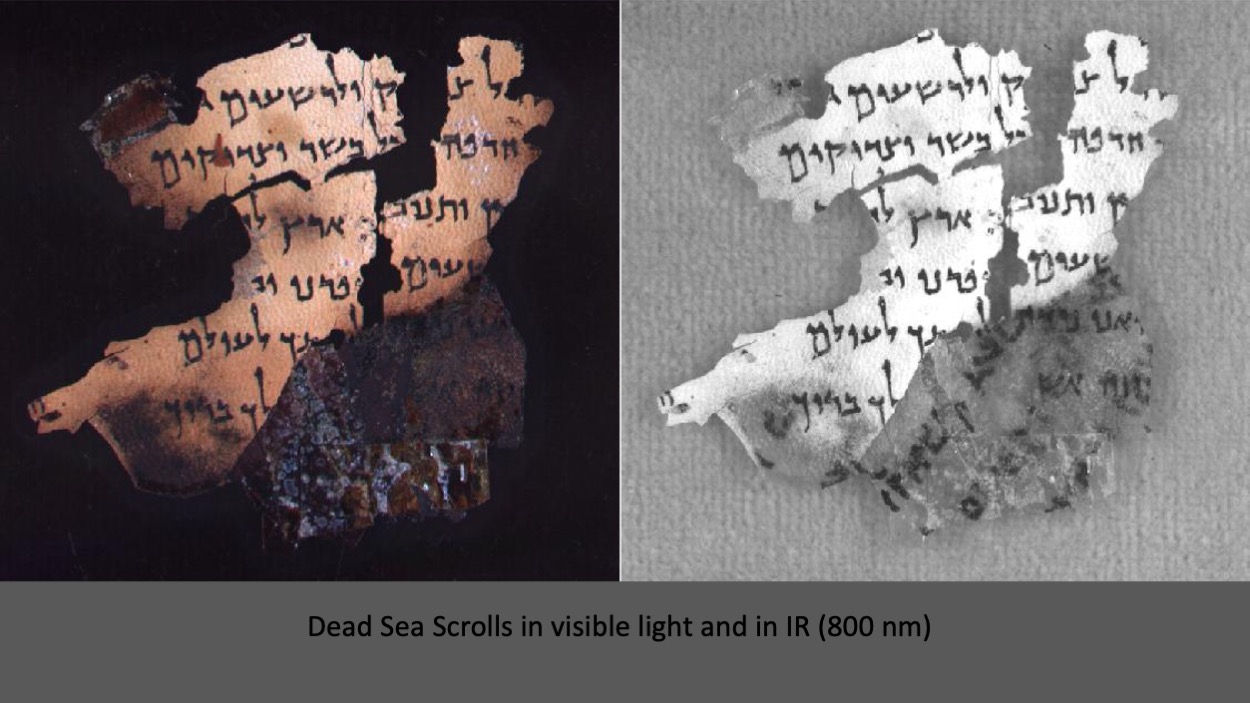 Dead Sea Scrolls
Infrared has been used exclusively on the Dead Sea Scrolls because they are written in carbon ink which remains black in the infrared. That brings me to the second effect of infrared on manuscripts. While carbon ink is unaffected, infrared causes iron gall ink to fade, and eventually, by 1000 nm to disappear entirely. That means that one can use infrared light to distinguish between types of inks that, to the eye, look exactly the same.
Dead Sea Scrolls
Infrared has been used exclusively on the Dead Sea Scrolls because they are written in carbon ink which remains black in the infrared. That brings me to the second effect of infrared on manuscripts. While carbon ink is unaffected, infrared causes iron gall ink to fade, and eventually, by 1000 nm to disappear entirely. That means that one can use infrared light to distinguish between types of inks that, to the eye, look exactly the same.
 Torah visible light –> IR 940nm
In this 13th century Torah above, the original text was written in iron gall ink. It was retouched, with parts rewritten, in carbon ink. By looking at the IR 940nm band, one can immediately see the letters and words that were changed and rewritten. Notice, in particular, the letter “peh” that is rewritten sometimes with little crowns, on the upper part of the leaf.
Torah visible light –> IR 940nm
In this 13th century Torah above, the original text was written in iron gall ink. It was retouched, with parts rewritten, in carbon ink. By looking at the IR 940nm band, one can immediately see the letters and words that were changed and rewritten. Notice, in particular, the letter “peh” that is rewritten sometimes with little crowns, on the upper part of the leaf.
By combining the enhancement of fluorescence from the UV with the ability to see through dirt and charring of the infrared, multispectral imaging can produce some spectacular reveals. The image below of a blackened binding fragment from the collection of Ohio State University has been processed by combining several UV and IR bands.
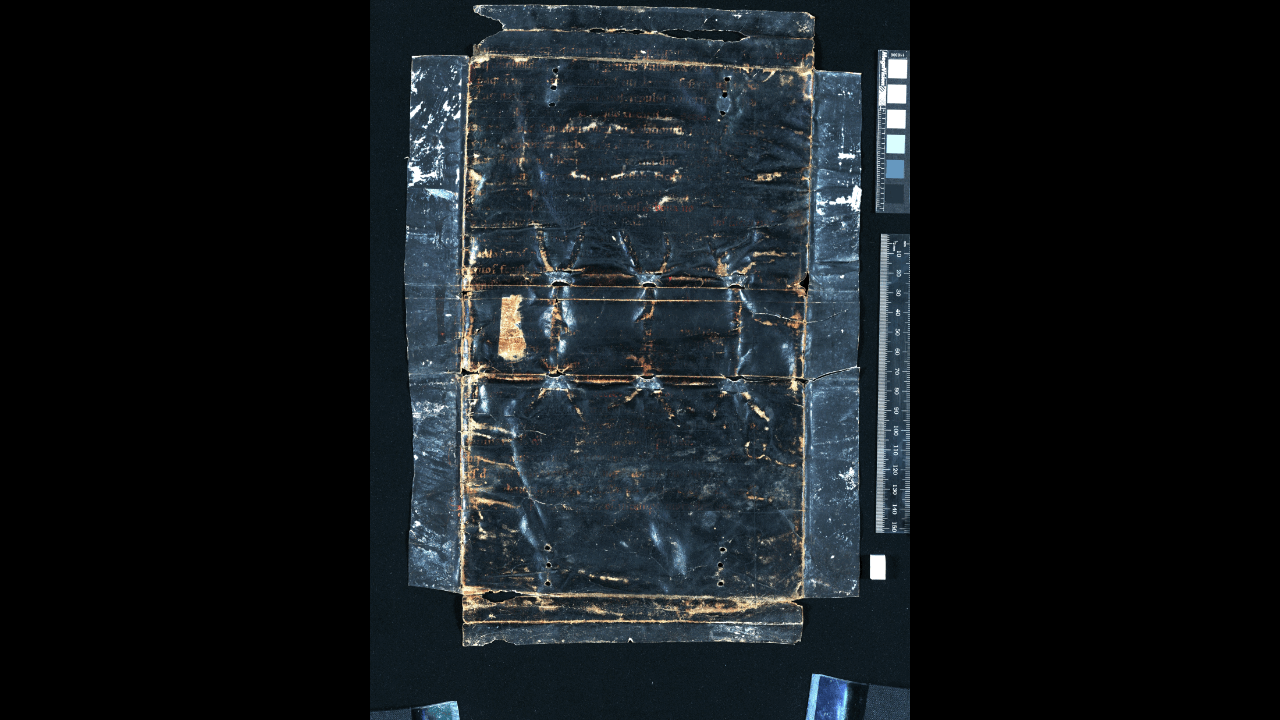 UV + IR multispectral reveal
UV + IR multispectral reveal
Camera, lights, action (not so much…)
From Kögel in 1913 until the Archimedes palimpsest project in the early 2000s, multispectral imaging systems remained pretty much the same. A broadband white light provided the illumination. Next came filters to separate out multiple narrow bands of light. For this, Kögel used a prism, but later photographers used colored band pass filters. Finally came the camera, which, for most of the period meant a black-and-white analog camera with film instead of a sensor. The imager would take multiple shots of the same object, changing filters to get different narrow wavelengths.
Today, the technology has changed in two ways: digital cameras, and light from LEDs. Capturing an image digitally means that it is recorded as a series of numeric values at each pixel, enabling researchers to use mathematical processes – division, statistical algorithms – to refine the image and solve the problem of legibility like an equation. In the past, broadband white lights, like halogen, produced light along with a lot of heat that could damage manuscripts and paintings. To make the light multispectral, imagers needed to filter out most of it into narrow bands, reducing the energy at each band and increasing exposure lengths. Again, a poor solution. LEDs, by contrast, emit mostly light and very little heat, reducing the potential for damage dramatically. They also produce narrow bands of light. Finally, with LEDs, because one doesn’t use filters to create multispectral light, they can be used to filter and refine fluorescent images using a filterwheel.
Using an LED light array with multiple narrow bands of light for illumination is the current best practice, although it requires: (1) a monochrome (black-and-white) sensor, and (2) a computer to control the sequence of lights moving through the spectrum, and the length of exposure. Below is an example of an “N-shot” table in Photoshoot, a multispectral software capture application made by leading MSI system manufacturer Megavision.
 N-shot table in Photoshoot software
N-shot table in Photoshoot software
Here, the LED lights by wavelength are listed in sequence, and power, shutter speed, and exposure length can be controlled at each wavelength. A similar system is also employed by Phase One, another major MSI system maker.
Lens
The final component of a state-of-the-art MSI system is the lens. Usually, people think of the differences among lenses as boiling down to (1) the focal length (35mm, 120mm, etc.), and (2) the type of lens (standard, macro, telephoto, etc.). Because in MSI one photographs objects in the invisible part of the spectrum as well as the visible, the photographer needs to consider the problem of focus in invisible wavelengths.
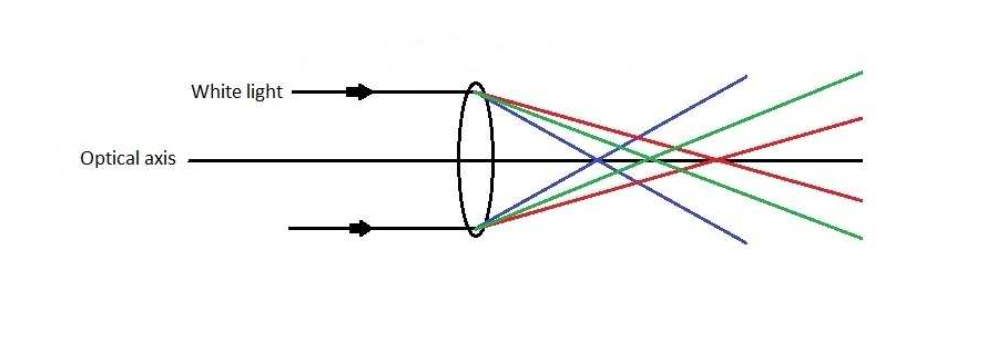
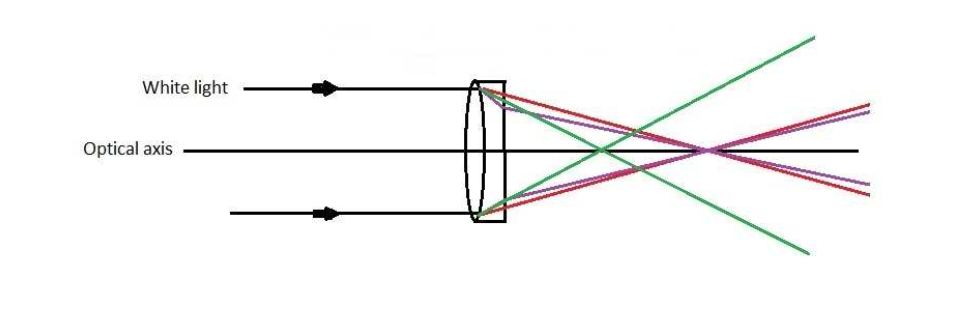
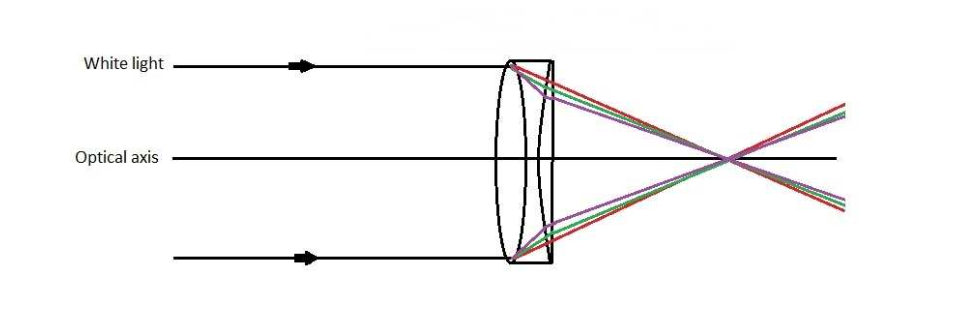
The problem is that a lens bends light like a prism so that the longer the wavelength of light, the further the focal distance in a standard lens (Figure 1.A). The focus for very short (ultraviolet) and very long (infrared) light would be the worst. The achromatic lens in figure 1.B adds an element to focus light in two wavelengths. Finally, the apochromatic lens in figure 1.C adds another element to focus light in three wavelengths.
“But,” you ask, “if an apochromat focuses three wavelengths, and visible light has multiple wavelengths, won’t the apochromat still have focus problems (called chromatic aberrations)?” Yes, but that is where the type of glass is important.
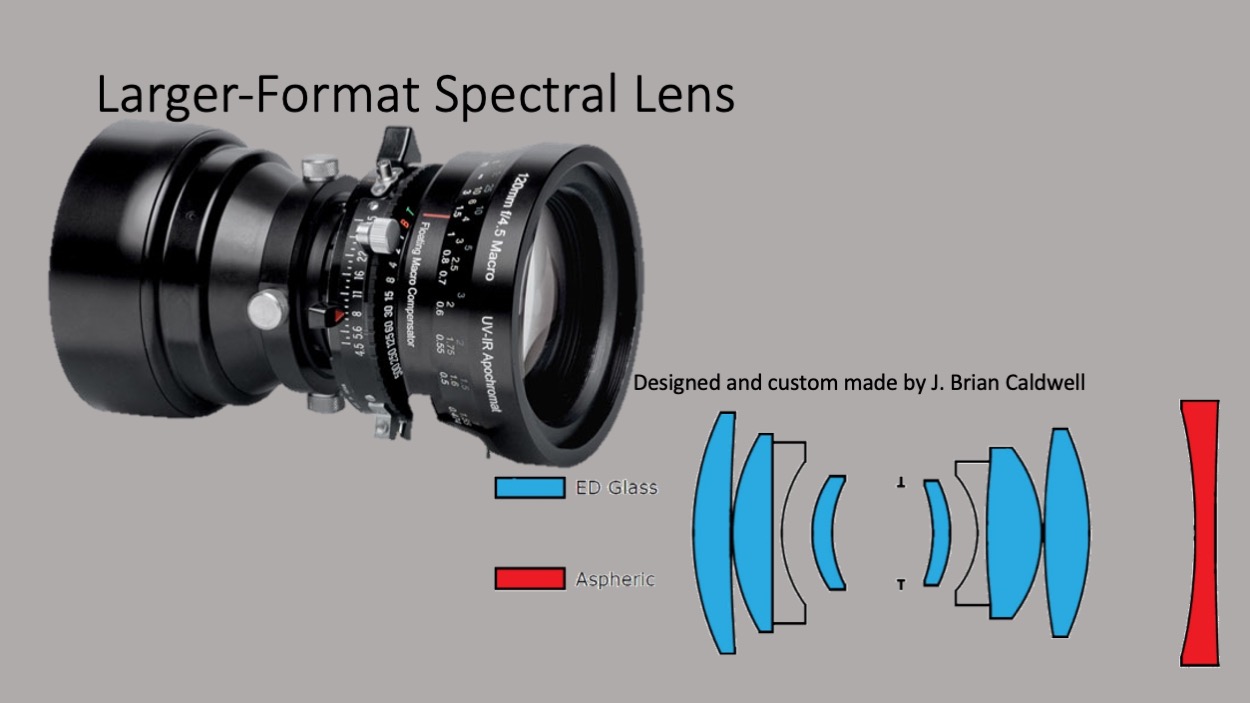 Caldwell 120mm, apochromatic, quartz (fused silica) lens for MSI
Caldwell 120mm, apochromatic, quartz (fused silica) lens for MSI
Lens designer Brian Caldwell makes a unique 120mm lens with special glass that has two properties ideal for MSI. First, he uses extra-low dispersion glass, that is a type of glass that reduces chromatic aberration. Second, his ED glass is made out of fused silica that mimics the optical properties of quartz. Normal glass is opaque in the ultraviolet, which is why you can’t get a sunburn through the window of your car in the summer. Quartz is tranparent to the UV, a useful quality when you want to takes images of manuscript in the UV.
Conclusion
So, is all this necessary in order to do multispectral imaging? No. It is possible to get decent results with a UV flashlight from Walmart and a cell phone camera. Here, I wanted to decribe the state-of-the-art for really important manuscripts. In another post, I will describe a low-end system you can use at home for your family Bible.
